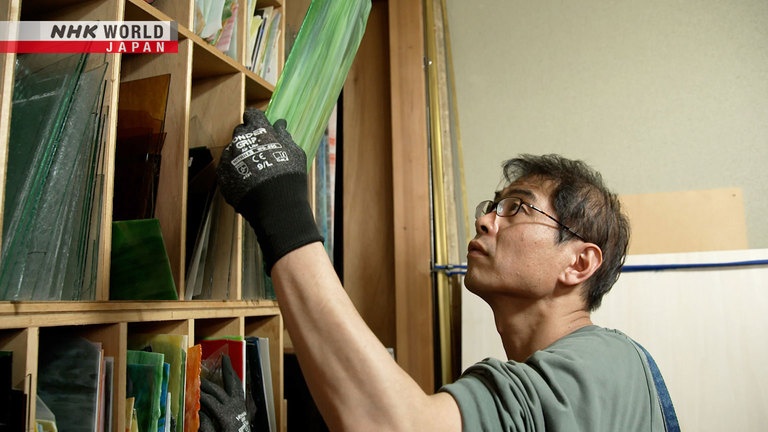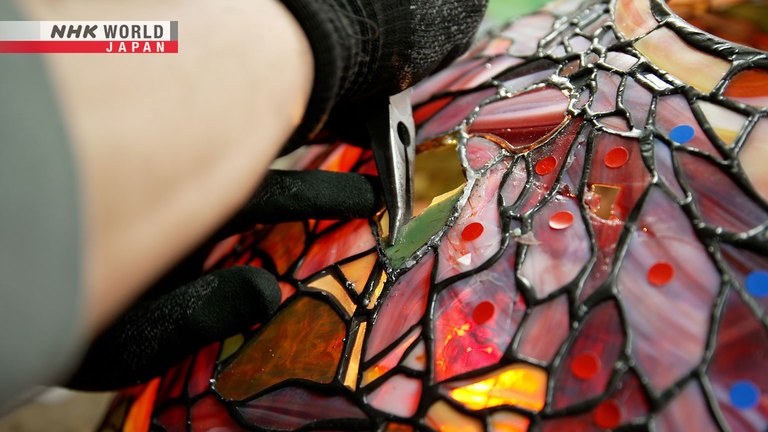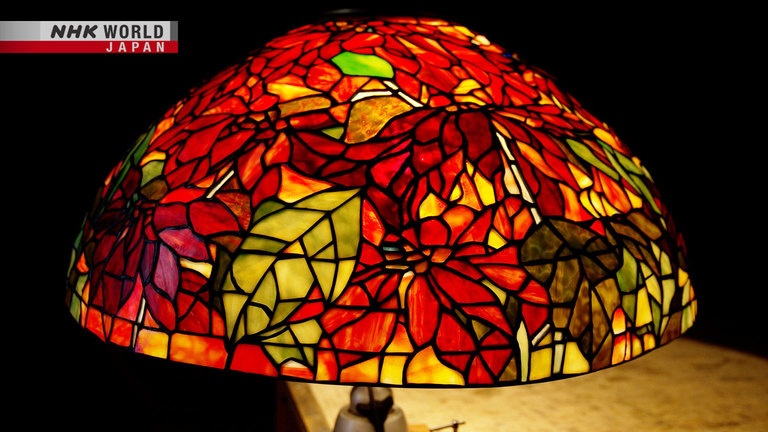Timeless Stained Glass
Saito Masaya is one of the few artisans repairing stained glass in Japan. He removes the damaged sections, delicately replacing them one by one. Getting the same glass as the original is impossible, so Saito chooses the best alternative from his own collection. He also sometimes remakes the frames that hold the pieces he restores. He uses every tool at his disposal to bring it back to life. His passion for stained glass shines bright, illuminating future generations.



Transcript
Since ancient times, the Japanese have believed that a life force resides in all creations.
Valuing and caring for the things we use, a "Zero Waste Life."
Pointing the way to better living for a new era.
Just 30 km east of Tokyo, we find an artisan with a rather rare specialization for Japan.
Saito Masaya.
Saito's workplace is a one-room workshop in his home where he repairs broken stained glass.
Most people don't think of it as
something that can even be fixed.
It's often thrown away with only minor damage.
Clients say plenty of places sell stained glass,
but almost nobody repairs it.
They often tell me they looked
everywhere until they finally found me.
Stained glass in Japan has over 150 years of history.
It first arrived in 1865, a donation from a French monastery to a church in Nagasaki.
After the atomic bomb in WWII, it was broken, but was later repaired and remains there to this day.
Today, Saito's starting repairs on a lampshade for an antique shop.
It was damaged in an earthquake two months prior.
The stickers mark the sections needing repair.
The broken glass will be replaced.
He begins with this green piece.
What's the best match...?
He searches his large stock of replacement glass for the closest possible color and texture.
There's no information on when or by whom the lampshade under repair was made.
There's no way to find the original glass.
Worse yet, the number of glass makers in Japan is in decline.
It's important it doesn't look
out of place when illuminated.
So, I'm using the light to find a match.
He also tries to interpret the maker's intentions while choosing the replacement glass.
It's a leaf, and this is probably the stem.
It has a veiny quality, I think.
These lines could be the veins.
He's finally found the right replacement.
He'll now cut it to precisely match the original.
Just right, it's a perfect fit.
As new glass is added, the lampshade is gradually reborn.
In total, 41 broken sections will be replaced.
The process continues one piece at a time over a period of two weeks.
Saito doesn't just do repairs; he also produces his own original stained glass.
Six of them are featured in the atrium of his family home.
They represent the changing seasons of Japan.
Each one depicted beautifully in glass.
Saito first encountered stained glass as a young student, fascinated by its brilliance while visiting an art museum.
I thought it was so beautiful,
the way it changed the light.
And since the image was depicted in glass,
the light moving also changed the feeling.
After graduating university, he studied at a school for stained glass makers.
Here's a piece from my time at school.
The first image I ever drew on glass.
To start, I couldn't even cut glass.
Cutting was hard, so was piecing it together.
I'm not very good at drawing either.
There wasn't much that was fun about it.
Well, I guess the process of assembly,
how it came together bit by bit...
that was the part I enjoyed most.
He first opened his own workshop 13 years ago.
While producing original pieces, he also began taking on repair work.
Glass is vulnerable to shock
although it's stable as a substance.
Naturally, it can be discarded,
but it can also be repaired.
If I didn't fix it, few others would,
so I try to help anyone who asks.
Treasured stained glass regains its brilliance in the hands of this skilled artisan.
So far, he's repaired over 400 pieces.
About half a year earlier, he repaired a true masterpiece.
The Kazamas are serious collectors of antique stained glass.
Found in an antique seller's warehouse in quite poor condition, they brought it to Saito for repairs.
There was no frame at all,
just glass fixed to the back panel.
In that condition, just moving it
could cause serious damage.
Naturally, there were breaks and cracks
here and there. He repaired everything.
The piece is believed to be over 100 years old.
Saito didn't just replace the broken glass.
He also built the wooden frame surrounding it, so it could be viewed by others once again.
Everywhere there was a crack, he added additional lead solder.
This work takes patience and passion.
Stained glass is such a fragile thing,
so fixing little by little to pass it on...
that's not restoration but addition,
our own contribution of love.
And that's something truly wonderful.
People who truly love stained glass
want to care for it no matter the cost.
People like that are important.
If it breaks, I remake it for future generations.
I do the best I can with what tools I have.
The lampshade broken in an earthquake is now repaired and is illuminated once again.
One more ray of light, shining forward into the future.